Difference Between an S-Trap and a P-Trap Toilet
S-traps and p-traps are two types of drains that serve different purposes. S-traps are typically used for sinks, while p-traps are used for toilets. The main difference between the two is their form. S-traps have a U-shaped curve that helps to trap water in the drain, while p-traps have a J-shaped curve that allows water to flow through the drain.
Each drain has its unique physics. P-traps employ a water seal to keep sewer gases out of the house, whereas S-traps depend on gravity to keep water in the drain. A competent plumber frequently needs knowledge of plumbing physics to troubleshoot and fix particular plumbing problems.
Understanding the differences between s-traps and p-traps can help you choose the right drain type for your needs.
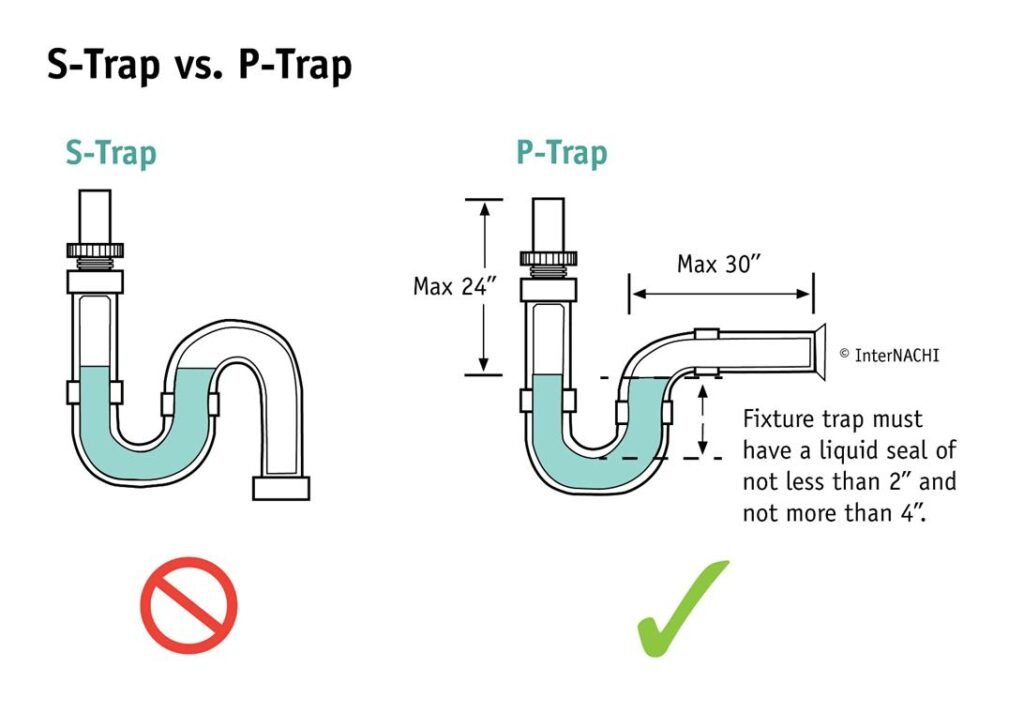
The Main Purpose of All Drain Traps
All drain traps, whether s-traps or p-traps serve the same purpose: to create a water barrier between the interior of your house and the sewer. S-traps get their name from their shape, which resembles an “S,” while p-traps look like a sideways “P.”
The main issue with S-traps is that they can siphon away too much wastewater, leaving the drain “dry.” A dry trap allows unhealthy gases to enter the home, so p-traps were designed to eliminate this problem.
P-traps use water to create a seal that prevents gases from escaping. They are generally considered more effective than s-traps, but both traps can keep your home from sewer gas.
What Does An S-Trap Do?
S-traps were once a standard drain configuration during the early 20th century. They were installed (under a sink or tub) in an “S” shape, frequently making a short detour and falling into a floor drain.
S-trap drain configurations can function perfectly in some situations. However, sometimes too much water flows through an s-trap, leaving the trap nearly empty. The space between the trap and the pipe is filled with sealing material, such as asphalt.
This creates an air gap that allows gases to escape through a dry trap. Due to the risks associated with dry traps, s-traps were banned in new buildings many decades ago.
Nowadays, P-traps are used instead because they have an added curve that prevents gas from escaping and maintains a water seal in the trap. P-traps have become the standard for new construction and are more successful at preventing wet and sewer gas leaks.
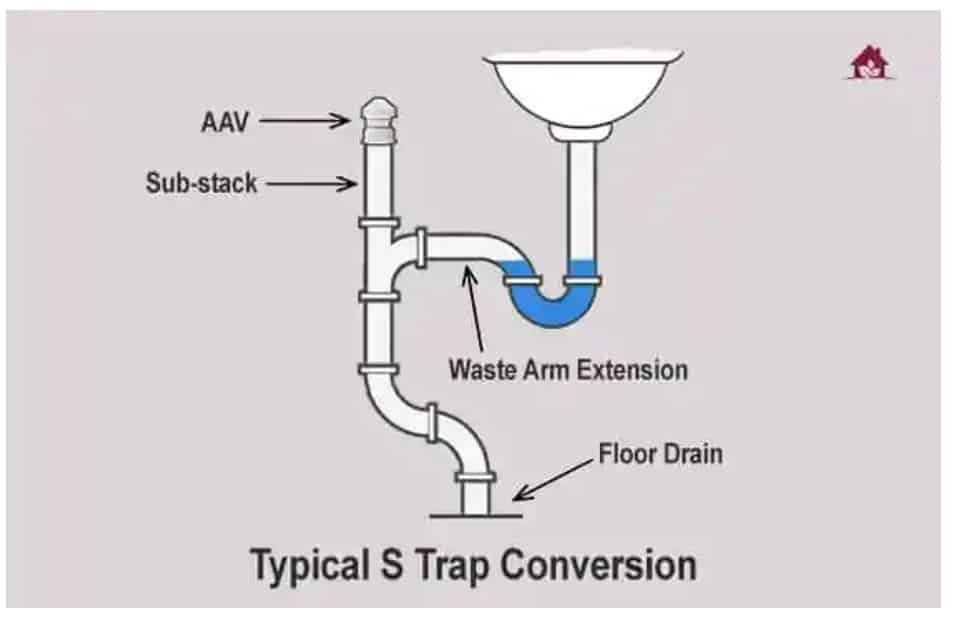
S-traps No Longer Meet the Code and Are Illegal in New Construction
S-traps were once widely used in plumbing, but they are no longer allowed in new construction due to potential problems. S-traps are prohibited primarily because a siphoning action may occur when a high volume of water, such as a full sink, is drained. This motion frequently sucks the water through the pipe, leaving the bottom of the trap dry.
This can allow sewer gas to enter the home, which can be a health hazard. In addition, if the trap is not refilled with water quickly enough, it can allow pests and other animals to enter the home through the drain. While s-traps may have been common, they are no longer up to code and should be avoided in new construction.
A Dry Trap Can Be More Than Just Smelly
A dry trap may not simply smell bad. Gases and odors can travel through the drain pipe and enter your home without a barrier. Additionally, vermin can enter your home through the drain. A properly working drain trap is essential to prevent these unwanted guests.
Gases like methane, hydrogen sulfide, and ammonia are present in sewers. A barrier, such as a drain trap, is required since these gases may be offensive and hazardous. What may seem even worse is that vermin can enter your home through your drain without some barrier.
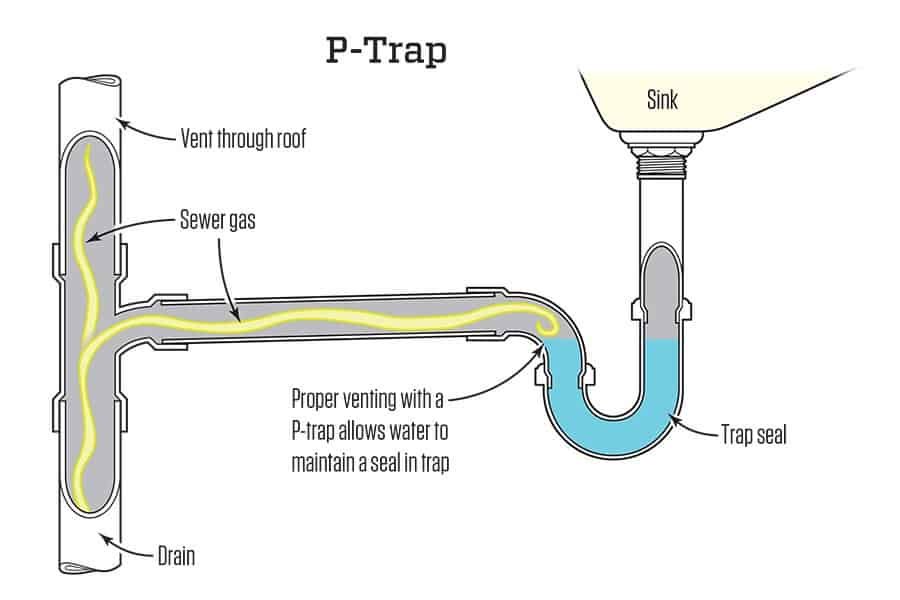
To safeguard your property from these possible risks, it would be beneficial if your drain trap were in good functioning order. A dry trap may not just smell bad; it can be dangerous. Keep your trap working correctly to avoid unwanted guests or dangerous gases entering your home.
Gas and smells might enter your house through the drain line when a trap is dry. Gases like methane, hydrogen sulfide, and ammonia are present in sewers. A barrier, such as a drain trap, is required since these gases can potentially be hazardous and offensive-smelling.
A Simple Remedy For a Dry S-Trap (or P-Trap)
Naturally, filling a dry drain trap with water and allowing it to run down the drain slowly is an easy technique to ensure it remains sealed. Any trap may go dry over time as a result of evaporation. Because of evaporation, any seldom-used sink might develop a dried drain trap.
S-traps are a type of trap used in toilets to direct water flow. Anyone can hear and see how long it takes for water to run after flushing and filling the toilet bowl again. The reason for water to keep flowing is to ensure that the S-trap is full. You probably already knew that the toilet bowl you see contains half of an S-trap.
An s-trap is an excellent example of a toilet drain’s configuration. They are ideal since water flows into the toilet bowl as the tank fills up.

P-Traps: What Does a P-Trap Do?]
S-traps were replaced mainly by P-traps, particularly under sinks, owing to the inability to siphon. Using s-trenches was phased out in favor of p-trenches because they eliminated the siphoning problem. Because positive pressure or the “sucking” action required for siphoning is not present inside a drain when air tensions are balanced, siphoning becomes much less likely.
Second, a waste arm extension is attached to the drain side of the trap. The decreased possibility of gravity “dragging” water through the pipe is due to the long pipe. A waste arm extension is what it is called.
The most basic calculation to determine the necessary waste arm extension length is simple: to prevent siphoning, the extension must be at least 2-1/2 times the pipe’s diameter. A drain pipe with a 1-1/2′’ diameter needs a waste arm extension at least 3-3/4′’ long for proper p-trap formation.
Even yet, a p-water trap can still evaporation. As a result, no “ideal” arrangement guarantees that the possibility of a dry trap will be eliminated. A dry trap might occur due to evaporation if you have a seldom-utilized sink. Regular plumbing maintenance and forcing water into the drain for a few seconds on occasion may prevent this from happening.
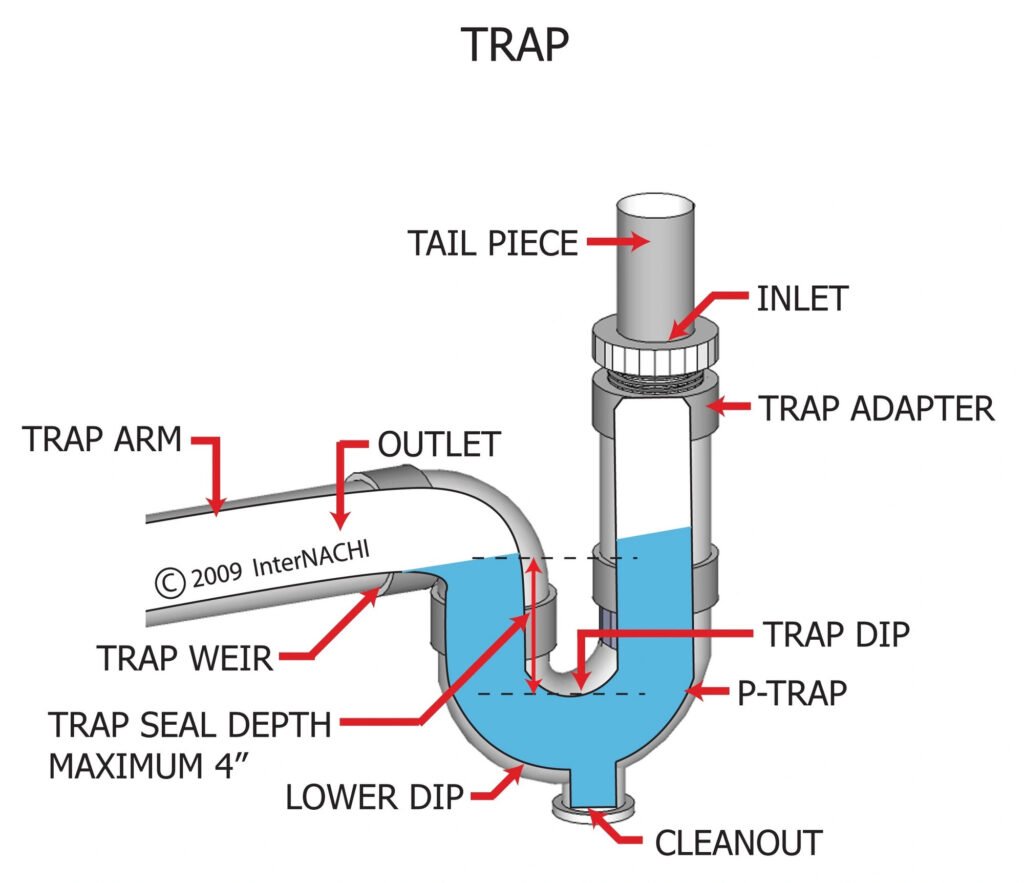
Modern Drain Pipe Venting
A vent stack is employed in modern plumbing to relieve negative pressure inside pipes. The vent pipe generally runs vertically within a wall, through the attic, and onto the outside of the home. A single vent pipe may be used to drain numerous drains.
Without a vent stack, it is often impossible to rip into a wall without drilling significant holes through headers, beams, and the roof. Modern drain pipe venting systems are much easier to install and do not require major renovations.
They offer an efficient solution to vent several drains without running a separate vent pipe for each one and are simple to adapt to existing homes and structures. As a result, modern drain pipe venting systems are a more efficient and cost-effective solution for preventing negative pressure in drains.
Converting an S-Trap to a P-Trap
An S-trap is a type of drain that uses the weight of the water in the trap to block sewer gases from coming up through the drain. However, the water can evaporate over time, leaving the sewer gases free to enter the home. A P-trap, on the other hand, uses a water seal to block sewer gases. By converting an S-trap to a P-trap, you can help to keep your home free of sewer gases.
Add a waste arm extension and vent the pipe to convert an S-trap to a P-trap. The waste arm extension prevents water from siphoning out of the trap, while the vent allows air to enter the drain so that water can flow freely.
If you are unsure how to make these changes, it is best to call a plumber. Making these changes yourself could result in problems with your plumbing system.
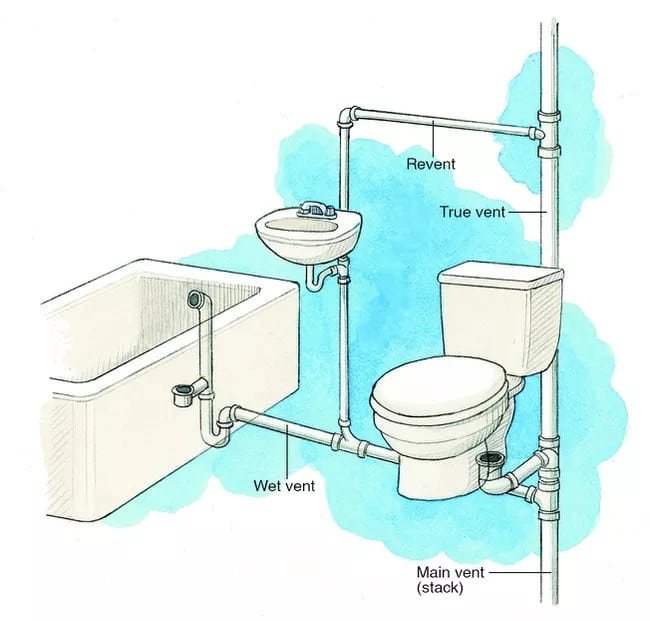
Converting an S-trap to a P-trap can help keep your home free of sewer gases. To protect your plumbing system, be sure to follow these guidelines carefully.
Air Admittance Valves (AAV’s)
Air Admittance Valves, or AAV’s, are an alternative to a fully installed vent stack. AAVs allow air to enter the waste side of the drain pipe while preventing sewer gases from getting out. This is done by equalizing the pressure inside the drain. AAVs are a one-way valve, meaning they only allow air to enter, not exit. This makes them ideal for preventing sewer gases from escaping into the home.
AAV’s are simple to install and require no maintenance. They are an excellent choice for people trying to save money on plumbing because they are reasonably priced. If you are considering using an AAV, check with your local code officials to ensure they are allowed in your area.
AAVs are not permitted in some areas. Before installing an AAV, verify your local code.
S-Trap Vs. P-Trap Conversion Kits and Alternatives
Conversion kits for s-trap to p-trap are available, but bespoke configurations are usually required. Most big-box building stores provide reasonably well-equipped plumbing departments that allow you to “customize” your installation. Make sure you spend money on an excellent air admission valve. Oatey SureVent, StudorVent, and Sioux Chief Turbo Vent are all decent AAV products.
Building a sub-stack below the AAV would be best to prevent overflow or backup. See the drawing above for reference. To avoid overflows and backups, ensure the top of the sub-structure rises above the sink drain by at least 2 inches (5cm).
Attaching the parts is the only thing to do: adjust your drain and wait a few hours. The conversion assembly is all contained within the cabinet under the sink. Follow the guidelines for an s-trap vs. p-trap conversion (waste arm extension length and venting requirements) to complete the job quickly and somewhat well.
This post is intended to educate you about the distinctions between s-traps and p-traps. It does not, however, cover all of what you need to know about converting an s-trap. Despite this, I believe I addressed most, if not all, of the elements you need to understand for an s-trap conversion.

